The James Webb Telescope has been operating in space for over a year now. And all this time, it has not been idle for a single second, performing research that no other instrument could have done. All this is possible not only because of the size of its mirror, but also because of the unique technologies used in the construction of this orbiting observatory.
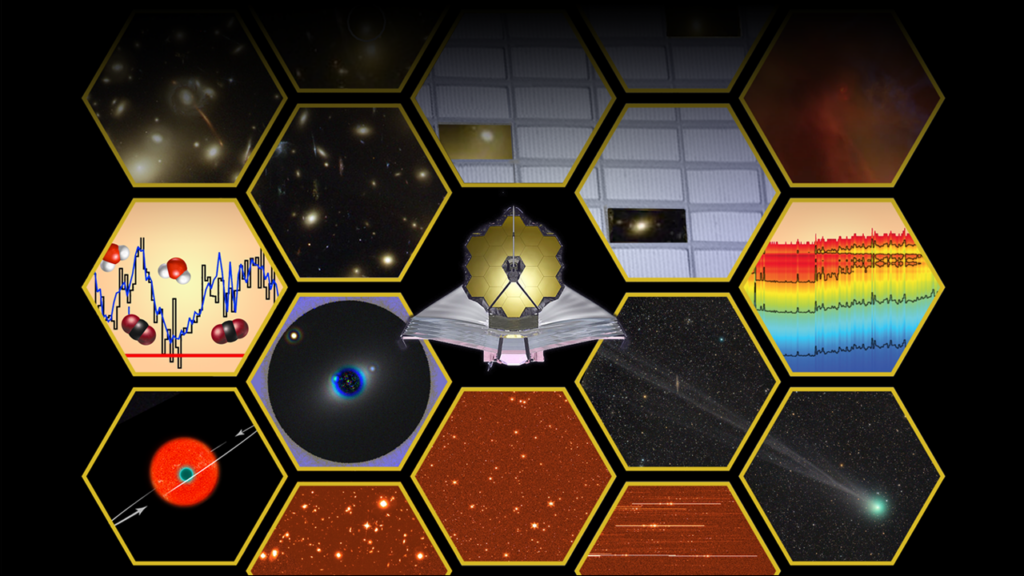
Fulfilling the dream of a perfect telescope
The ideal telescope must first of all be gigantic. For many centuries, this truth remained unchanged, because this instrument works by collecting light from a large surface using mirrors or lenses. However, as early as 20th century it turned out that the Earth’s atmosphere causes distortions that disrupt accuracy of the most powerful instruments.
Therefore, the idea of putting a telescope into orbit came up. This idea was realized by numerous spacecraft launched since 1966. However, all of them, including the famous Hubble Observatory, were still too small and operated in a too narrow spectrum to satisfy astronomers. So, they started developing an instrument that would meet all the challenges of modern scientists exploring the Universe.
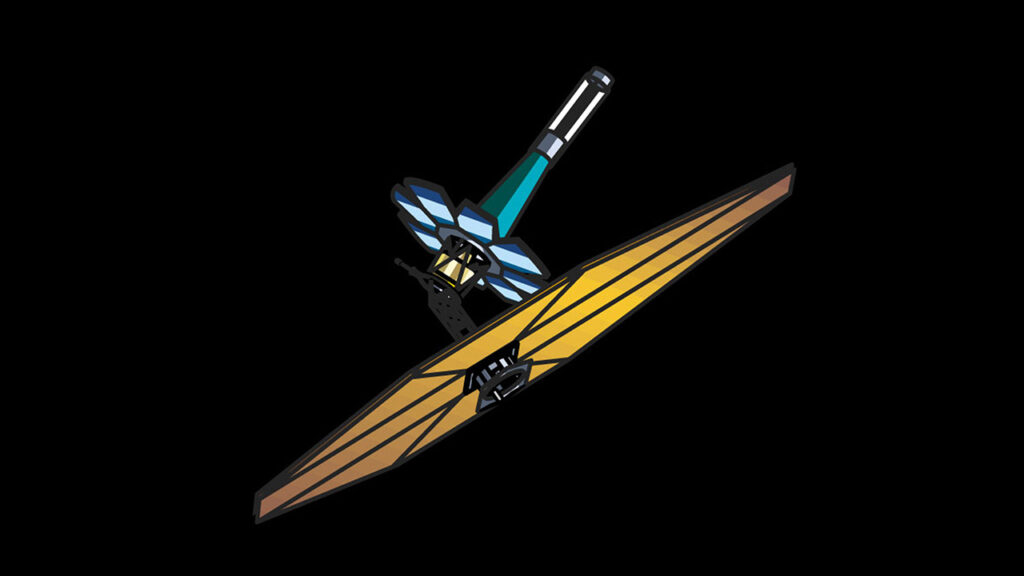
This work lasted for more than 20 years. After all, the ideal astronomical instrument dreamed of by scientists not only had the size of a tennis court, but also required the implementation of technologies that had never been used in space before. In fact, the launch of the telescope was postponed for so long precisely because engineers needed time to debug one amazing device or another. And there are many of them on the spacecraft.
James Webb segmented mirror
The most important and complex part of the James Webb telescope is its mirror. It was the mirror that really rattled the nerves of the engineers. Typically, the light collection device on such instruments has the shape of a round plate with a hole in the center where the radiation should eventually enter.
However, the mirror for the new telescope had to be 6.5 meters in diameter. And if it were made in one piece, it would not only misfit all launch vehicles, but would also weigh an awful lot.
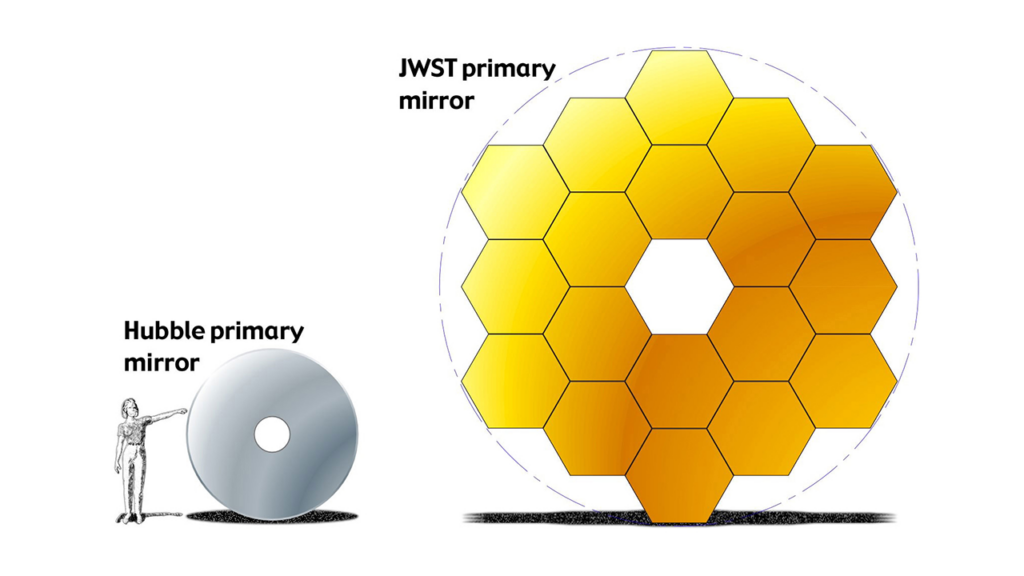
Therefore, the engineers made a “plate” of 18 separate mirrors, each of which has a hexagonal shape and is mounted on a common frame. This solution allowed not only to reduce the weight of this structural element, but also to make three sections on one side and three sections on the other hinged so that the telescope could be reduced in size during launch.
Each of the hexagons is made of extremely lightweight and durable beryllium metal and polished to a level that even the best household mirrors cannot match. As a result, a single element weighs only 20 kg, despite the fact that it measures 132 cm from edge to edge.
Adaptive optics and secondary mirror
Each of the 18 mirrors is equipped with seven actuators. They act as a single unit and can move the mirror sideways by a few millimeters, move it forward, backward or tilt it. At the same time, a single fragment can be positioned with an accuracy of 140 nanometers. This is about 350 times less than the thickness of a human hair.
This is done so that flat mirrors work together better than a mirror with a perfect parabolic shape. Such a system is called adaptive optics and allows for fine-tuning to each object of observation.
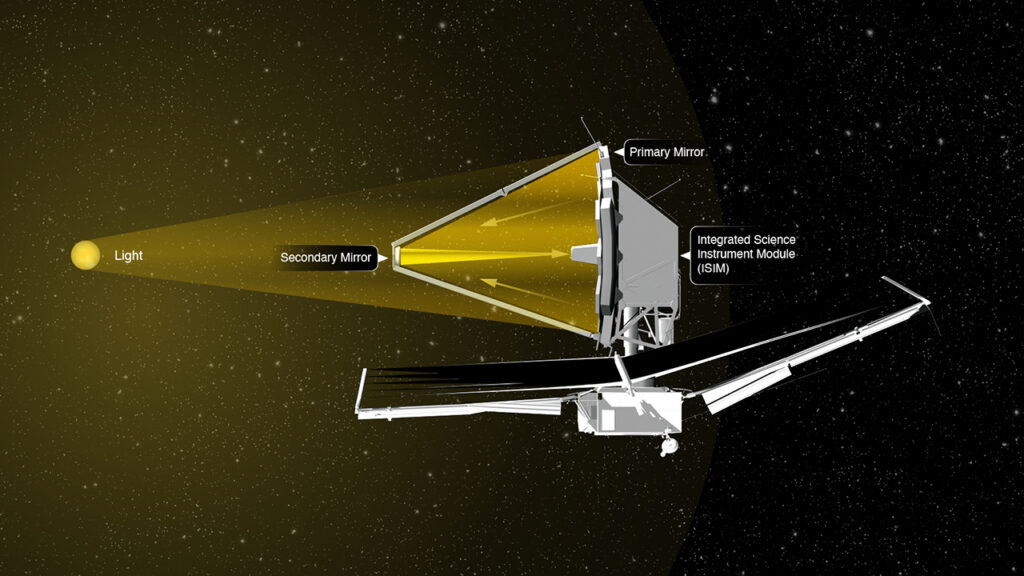
However, it is not enough to reflect the rays from the main reflective surface to one point. It is also necessary to direct them inside the aperture, where the main instruments are waiting for them. And this work is done by the secondary mirror. It is located on the rods in front of the primary one and has a diameter of 74 cm.
At the same time, the secondary mirror has its own drive system that can change the angle of its inclination. All the mechanics of the primary and secondary mirrors work together and are able to change their position many times per second to obtain a clearer image.
But that’s not all. After the focused rays enter the aperture of the primary mirror, they are reflected twice more from the surfaces of the device, which is supposed to rid the image of distortion. Only then does the light reach the main surveillance devices.
Near-infrared camera
The James Webb Telescope does not operate in the visible spectrum. More precisely, it only slightly covers the red region of the spectrum, but mainly observes the Universe in the near and mid-infrared. This is because the long wavelengths of this region of the spectrum are much less absorbed by interstellar dust and very bright but distant objects are clearly visible at this wavelength.
The new space observatory’s near-infrared instrument is called the Near-Infrared Camera (NIC). It consists of a set of two CCDs, each for a different wavelength, several filters that can be combined with the matrices to expand their capabilities, a prism, and a set of coronagraphs.
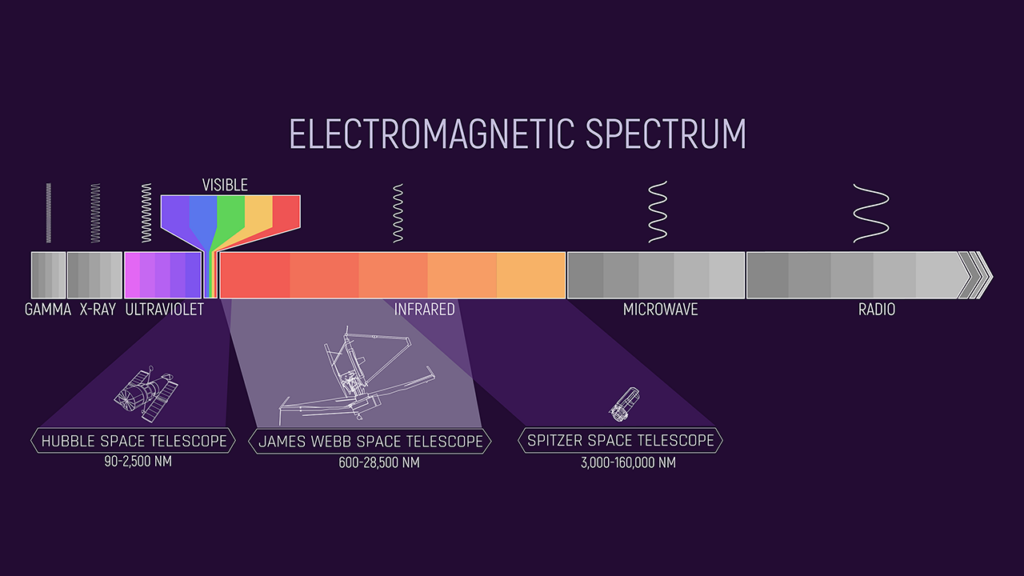
The prism allows the camera to work as a simple spectrograph, i.e. to study the absorption and emission lines of objects and determine their chemical composition. And a coronagraph is a camera mask that can be used to cover, for example, a star and see the planets around it.
What can the infrared camera of the James Webb Telescope see?
The NIC is one of the most important instruments of the James Webb. This camera saw the first stars and galaxies in the Universe just as they were few tens of millions of years after it was formed. And these discoveries have already sparked a lot of debate about how to interpret the images. Further research should give scientists more information.
The second task facing the NIC is to study the galaxies around us. For the closest ones, the telescope determines what type of stars they consist of and how old they are. For those that are a little further away, it studies the redshift — the shift of spectral lines into the red region due to the movement of these objects away from us.
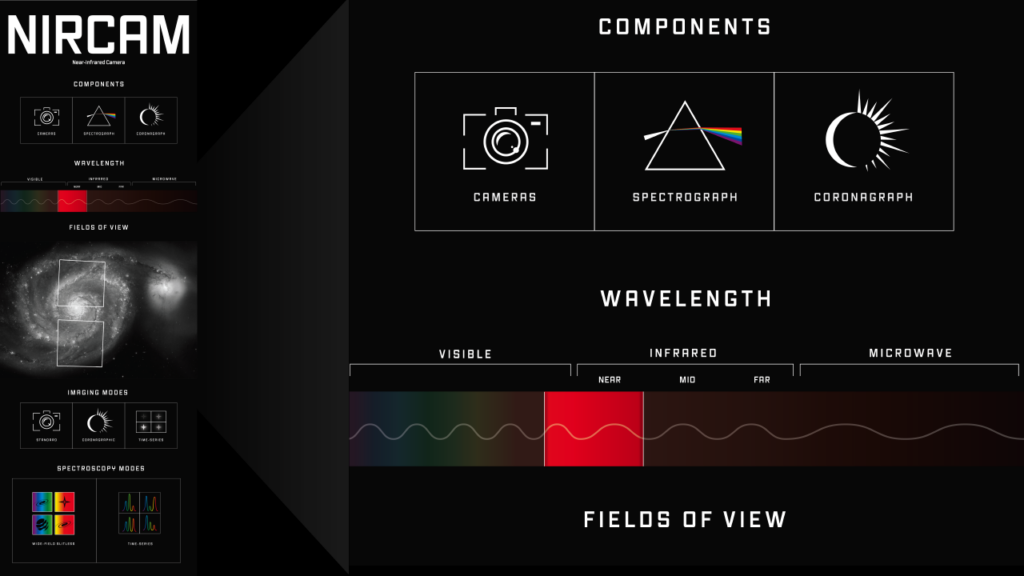
In our own Galaxy, the infrared camera is studying young stars and protoplanetary disks. Perhaps this will help us learn more about how planetary systems like ours are formed. By the way, it will also be investigated by James Webb. Here it will scrutinize Kuiper belt objects. Although over the past 30 years we have already discovered hundreds of bodies with diameters exceeding 100 km in the outskirts of Solar System, there may be many more unknown dwarf planets there. And it is NIC with its incredible sensitivity that can find them even at distances measured in hundreds of AU.
Finally, it is the James Webb’s main camera that monitors gravitational lensing in intergalactic space. This effect is manifested in the fact that light from a source, such as a galaxy, can be deflected by the gravity of a massive but invisible object. In this way, the telescope has already found not only the most distant galaxies, but also individual supernovae shining through the Universe.
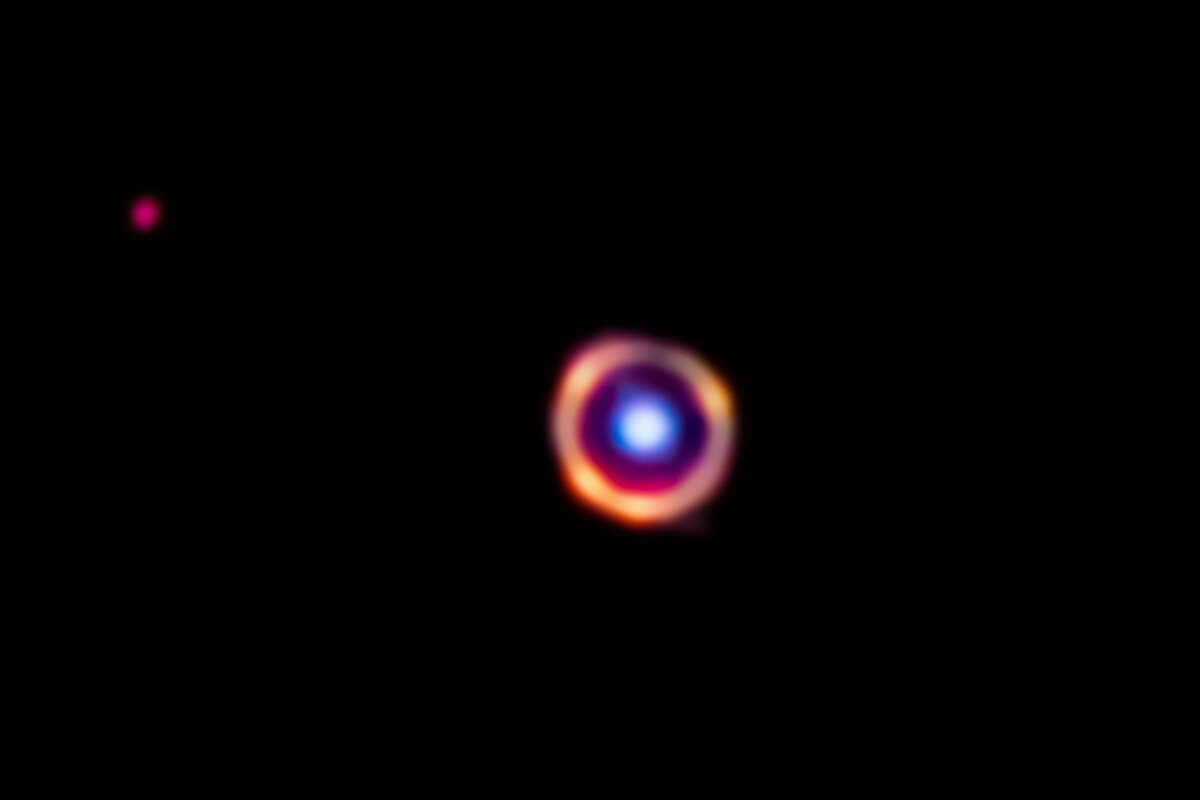
NIRSpec spectrograph and the search for aliens
Although the NIC camera can act as a spectrograph, there is a device on board the James Webb Space Observatory that has much more reason to be called that. It is the Near-Infrared Spectrograph (NIRSpec). In order to understand what this miracle of engineering is, it is necessary to understand how spectra of astronomical objects are usually obtained.
To do this, the light of a star is passed through a narrow slit to form a beam. This beam is then passed through a prism to form a “rainbow” in which lines are seen. But to do this, the light source must be somehow separated from the rest. The telescope`s field of view covers hundreds of stars simultaneously, and there is no time to focus on each of them separately.
Engineers solved this problem in the following way. The NIRSpec consists of hundreds of individual shutter units, each of which can be opened independently of the others. Thanks to this, hundreds of high quality star spectra can be obtained almost simultaneously.
Scientists have found an equally remarkable application for NIRSpec. This particular device will search for signs of life in space by looking at the spectra of stars with exoplanets. If one of those planets comes between the star and us, we will be able to see the spectrum of rays passing through the atmosphere. And in this spectrum, scientists will look for lines that are characteristic of certain substances.
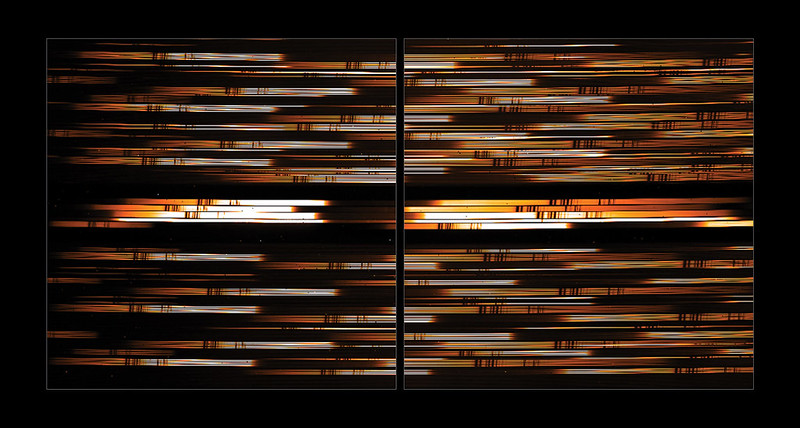
These substances are called biomarkers because they either indicate the suitability of a planet for life similar to Earth’s or are products of it. The former include oxygen, nitrogen, and water. There is some disagreement about some other, because, for example, methane and phosphine, although considered biomarkers, can be produced without the participation of living organisms.
There are also more complex biomarkers, such as amino acids or peptides. They are much more reliable indicators of the presence of life on the planet because they are usually not formed in abiotic processes. And James Webb will hunt for them especially carefully. After all, almost 10 thousand planets have already been discovered, and by observing them with NIRSpec, the observatory will hopefully find traces of primitive life on at least one of them. Or perhaps there will be hundreds of such planets, and we will be able to say with much more certainty how widespread this phenomenon is in the Universe.
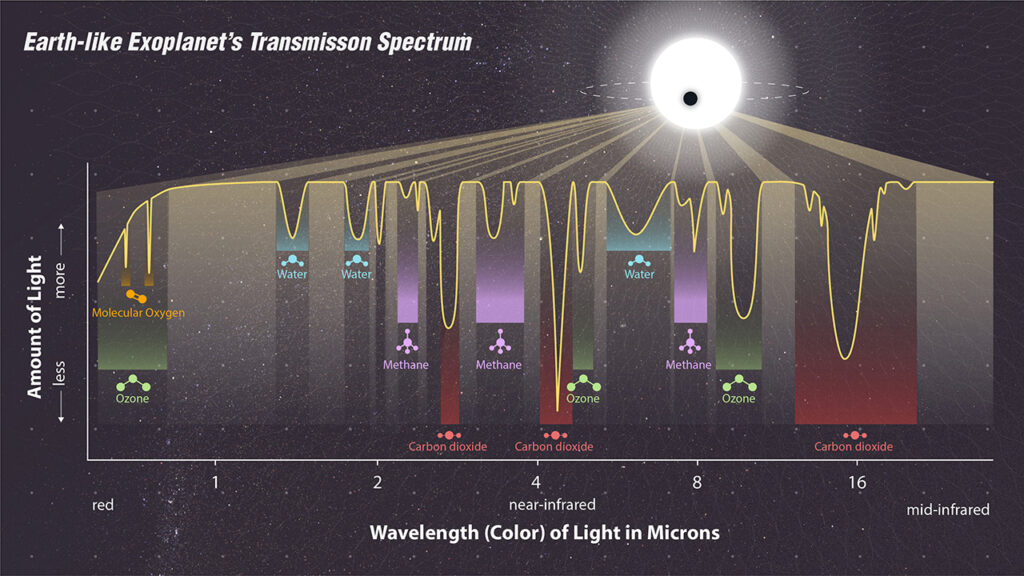
Mid-Infrared Instrument
Another instrument that is installed on board the orbiting observatory is the Mid-Infrared Instrument, or MIRI. The mid-infrared range is shorter wavelengths. Their images are not as clear as those of the NIC, but they allow us to see objects whose radiation is weaker.
Otherwise, this camera works similarly to the NIC. It can take pictures of objects through filters, perform spectroscopy, and use coronagraphs. The tasks of this device are to determine the redshift of distant galaxies, study the formation of distant stars, Kuiper belt objects, and comets. Interestingly, the technical solutions for this instrument were originally developed by Raytheon company for the Javelin anti-tank system.
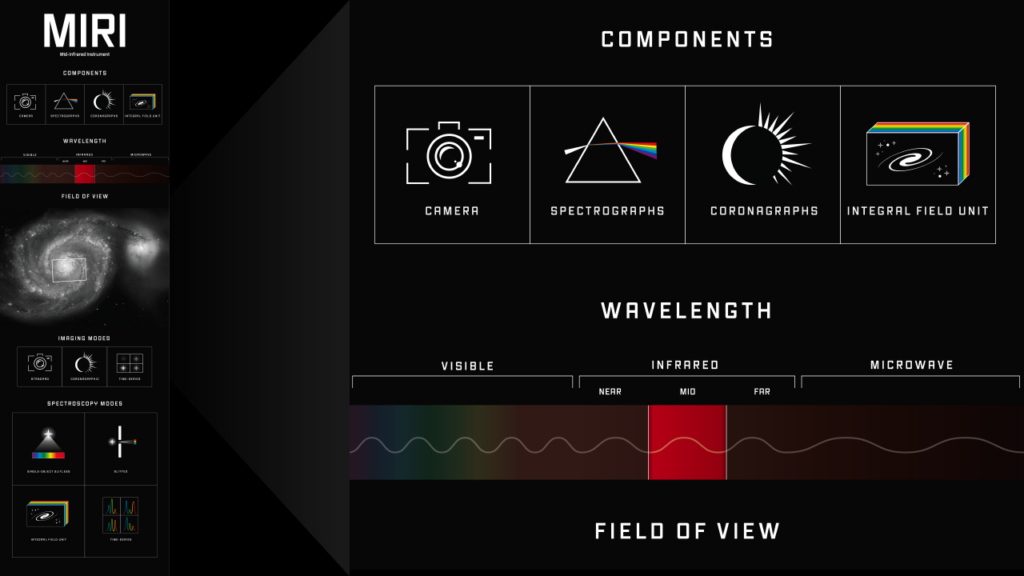
The James Webb telescope’s precision targeting system
But in order to see something, you first need to know where to look. This task is assigned to the telescope’s fine guidance sensor (FGS). In fact, it is a separate small telescope with a computer attached to it. Its memory contains spectra of different stars.
The FGS looks at the surrounding stars, compares their spectra with those stored in its memory, and determines which direction the telescope is currently pointing. Based on this, a decision is made as to what its main instruments should study.
James Webb heat shield
The telescope’s operation in the infrared spectrum means that it can only operate at very low temperatures. MIRI needs 7 degrees Kelvin to operate at all. Of course, there is a cooling system on the telescope, but the main way it is protected from being blinded by solar radiation is through a solar shield.
It consists of five large sheets of polymer covered with a mirror layer. Each of them measures 21.1 x 14.6 meters. The polymer layers are stretched over the frame one after the other and thus completely shield the entire giant James Webb mirror from the sun’s rays.
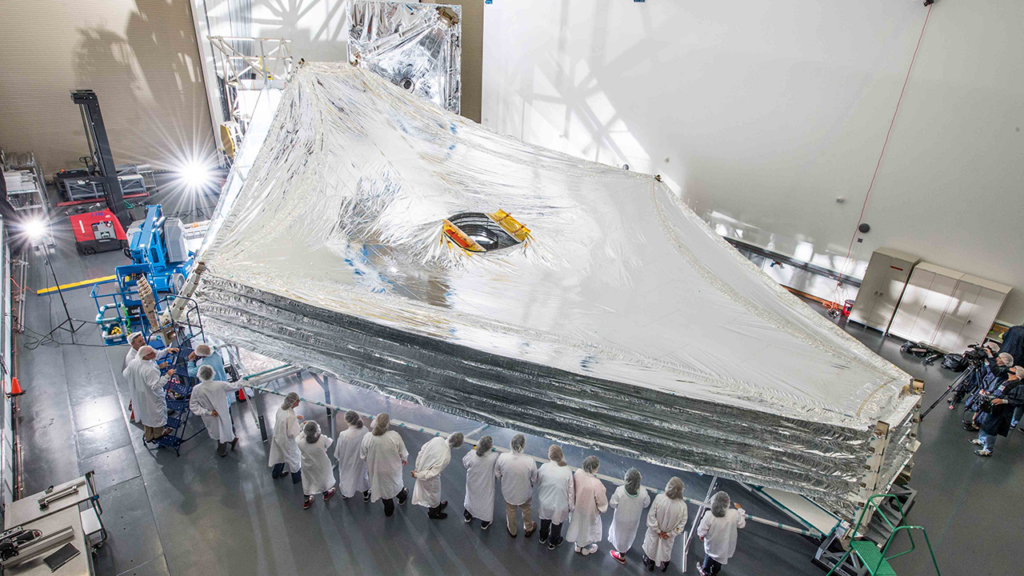
The launch of the telescope and the beginning of its operation
In 1997, when the James Webb telescope project was just beginning, its launch was scheduled for 2007. The cost of the project was then estimated at $500 million. However, the technical difficulties turned out to be much more complicated than originally thought, and by 2000 the price had more than tripled.
But even this did not help keep the project from being slowed down. Already in 2005, at a cost of three billion dollars, it became clear that the spacecraft would not be launched into orbit before 2013. Then the deadlines were repeatedly pushed back, and the price increased.
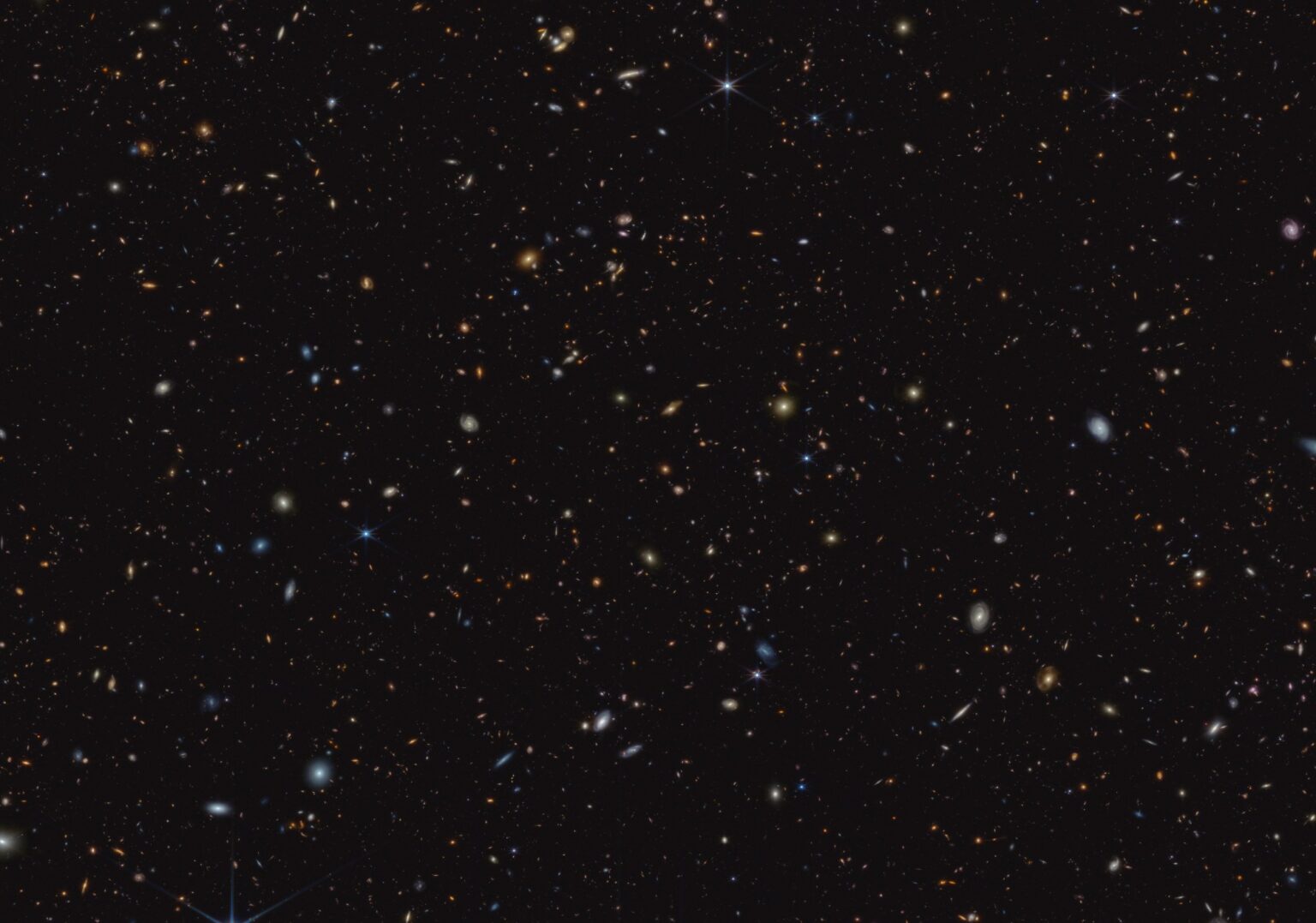
When James Webb was finally sent into space in 2021, its price has reached $10 billion, which is about 20 times more than originally planned. Despite this, the project was still a success. After being launched into orbit, the telescope headed to the L2 point, where it started operating.
Lagrangian points are the points where the gravitational forces of two bodies, such as the Earth and the Sun, balance each other. Because of this, the spacecraft does not need to use fuel to correct its orbit. The L2 point is located behind our planet and is always shadowed from the Sun by the Earth. This is where the telescope is working now.
